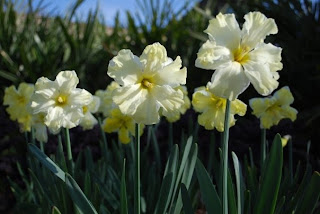Winter 2010 lingers on across Tennessee, Virginia and North Carolina. The white coating of de-icing salts over streets and highways can damage many trees and shrubs. Salt spray and salt deposits may also leach into the soil and become equally damaging. Plant species vary in their sensitivity to salt injury.
Browning of the tips of needle and broadleaf evergreens is a typical symptom of salt injury. Needle loss can be an extreme result, with evergreen branches becoming progressively bare. Often, evergreens become so weakened and stressed that new spring growth does not slow the needle/leaf loss. Overall tree health gradually declines.
The following practices can minimize salt injury to trees and shrubs:
1. Applications of water will leach some salt out of the root zone. Plentiful spring rainfall will help in this leaching/cleansing process. As much as 6 inches of water is needed to leach about half the soluble salts. In addition, applying gypsum (calcium sulfate) displaces the sodium in the soil.
2. Plant trees in salt-prone areas that are less vulnerable to salt damage. All trees are affected by salt to some degree, but some species are more tolerant than others. A listing of the susceptible and resistant trees to salt (University of Tennessee Extension publication SP-610) appears below.
3. In future plantings, avoid setting salt susceptible tree species in areas where salt-laden brine and slush are likely to accumulate.
4. Plants that are injured and exhibit dieback should be watered, pruned and fertilized.
Fresh mulch may be applied to help reduce water loss during the normally dry summer ahead. Weakened or stressed trees are also more susceptible to disease and insect pests.
Table 1. Salt Susceptibility of TreesVulnerable to SaltRed Maple -
Acer rubrum
Sugar Maple -
Acer saccharumMimosa -
Albizia julibrissinServiceberry -
Amelanchier spp.
American Hornbeam -
Carpinus caroliniana
Dogwood -
Cornus floridaHawthorn -
Crataegus spp.
American Beech -
Fagus grandifolia
Yellow Poplar -
Liriodendron tulipiferaCrapemyrtle -
Lagerstroemia spp.
Magnolia -
Magnolia grandifloraSpruces (most) -
Picea spp.
Eastern White Pine -
Pinus strobus
Scotch pine -
Pinus sylvestris Lindens -
Tilia spp.
Eastern Hemlock -
Tsuga canadensisMore Tolerant to SaltNorway Maple -
Acer platanoidesBuckeyes -
Aesculus spp.Birch -
Betula spp. Hickories -
Carya spp.
Ash -
Fraxinus spp.Ginkgo-
Ginkgo bilobaHoneylocust -
Gleditsia triacanthosBlack Walnut -
Juglans nigraEastern Redcedar -
Juniperus virginianaCottonwood/Aspens -
Populus spp.Cherries -
Prunus spp.Oaks (most) -
Quercus spp.Black Locust -
Robinia pseudoacaciaYews -
Taxus spp.Elms -
Ulmus spp.
 photo by Susan C. Morgan, Horticultural Manager at the Dallas Arboretum
photo by Susan C. Morgan, Horticultural Manager at the Dallas Arboretum



.jpg)
